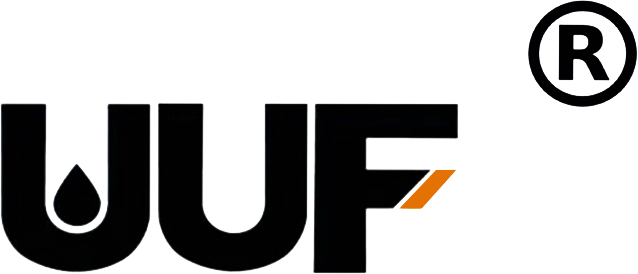Common Issues Caused by Faulty Mitsubishi Oil Seals: Understanding the Impact on Industrial Equipment
Time:
2025-11-17
Common Issues Caused by Faulty Mitsubishi Oil Seals Introduction to Mitsubishi Oil Seals Mitsubishi oil seals are critical components in various industrial applications. These seals play a crucial role in preventing the leakage of lubricants and fluids from machinery, thereby ensuring optimal performance. However, when these seals become faulty, they can lead to significant operational issues that
Common Issues Caused by Faulty Mitsubishi Oil Seals
Introduction to Mitsubishi Oil Seals
Mitsubishi oil seals are critical components in various industrial applications. These seals play a crucial role in preventing the leakage of lubricants and fluids from machinery, thereby ensuring optimal performance. However, when these seals become faulty, they can lead to significant operational issues that can impact productivity and safety.
Understanding the common problems caused by defective Mitsubishi oil seals is essential for any organization that relies on machinery for its operations. This article will explore these issues in detail, highlighting best practices for inspection, maintenance, and replacement.
Understanding Oil Seals: Function and Importance
What Are Oil Seals?
Oil seals, also known as radial shaft seals, are designed to contain lubricants within mechanical devices. They create a barrier that prevents the escape of oil and the ingress of contaminants. Mitsubishi oil seals are engineered to withstand various pressures, temperatures, and environmental conditions, making them suitable for a wide range of applications.
Importance of Proper Functionality
The functionality of oil seals is paramount to the overall health of industrial machinery. A properly functioning seal ensures the longevity of components, reduces maintenance costs, and prevents operational downtime. Conversely, faulty seals can lead to catastrophic failures, affecting both machinery and safety.
Common Issues Arising from Faulty Mitsubishi Oil Seals
1. Fluid Leakage
One of the most immediate and evident issues caused by faulty Mitsubishi oil seals is fluid leakage. When seals fail, lubricants can seep out of machinery, leading to reduced lubrication and increased friction. This not only causes wear and tear on components but also poses environmental hazards.
Consequences of Fluid Leakage
Fluid leakage can lead to increased maintenance costs and can cause machinery to operate less efficiently. In extreme cases, leaks can result in equipment failure, requiring extensive repairs or even complete replacements.
2. Contamination of Lubricants
A compromised oil seal can allow contaminants such as dirt, dust, and moisture to enter the lubrication system. This contamination can degrade the quality of the lubricant, leading to poor performance and a higher risk of component failure.
Impact on Lubricant Quality
When the lubricant becomes contaminated, it loses its ability to effectively lubricate moving parts. This can increase friction and heat, accelerating the wear of components and leading to potential breakdowns.
3. Increased Operational Costs
Faulty oil seals can significantly inflate operational costs. The combined effects of fluid leakage, contamination, and increased wear and tear result in more frequent maintenance and repair needs.
Long-Term Financial Implications
Organizations may find themselves facing unexpected expenses related to equipment repairs and downtime. Additionally, the longer machinery runs with faulty seals, the more likely it is to suffer from severe damage, leading to costly replacements.
4. Equipment Downtime
Downtime is a significant concern for any industrial operation. Faulty Mitsubishi oil seals can lead to unexpected failures that require immediate attention, resulting in unplanned outages.
Minimizing Downtime
To mitigate downtime, organizations must conduct regular inspections of oil seals, ensuring they are in optimal condition. Implementing a proactive maintenance schedule can help catch potential issues before they escalate into major problems.
5. Safety Risks
Faulty oil seals not only impact equipment performance but also pose safety risks to personnel. Fluid leaks can create slippery surfaces and increase the risk of accidents in the workplace.
Ensuring Workplace Safety
Regular checks and maintenance of oil seals are crucial in maintaining a safe working environment. Organizations should prioritize employee safety by ensuring all machinery operates efficiently and is free from hazardous leaks.
Preventing Issues with Mitsubishi Oil Seals
1. Regular Inspection and Maintenance
A proactive approach to maintenance is essential in preventing issues caused by faulty oil seals. Regular inspections can help identify wear and damage early, allowing for timely replacements before serious problems arise.
Inspection Checklist
- Check for visible damage to the seal
- Monitor for any signs of fluid leakage
- Assess the condition of surrounding components
- Ensure proper lubrication levels
2. Choosing the Right Seal for Your Application
Selecting the appropriate Mitsubishi oil seal for your specific application can significantly reduce the likelihood of issues. Consider factors such as operating temperature, pressure, and the type of fluid being sealed.
Factors to Consider
- Material compatibility with the fluid
- Required temperature range
- Pressure ratings
- Environmental conditions
3. Proper Installation Techniques
The installation of oil seals is critical to their performance. Improper installation can lead to premature failure, so it's essential to follow best practices during the installation process.
Best Practices for Installation
- Clean the sealing surface thoroughly
- Use the correct tools to avoid damaging the seal
- Apply lubricant to the seal during installation
- Follow manufacturer guidelines for installation depth
When to Replace Mitsubishi Oil Seals
Signs of Seals Needing Replacement
Identifying when to replace Mitsubishi oil seals is essential in maintaining machinery performance. Common signs that seals require replacement include:
- Visible cracks or wear on the seal
- Frequent fluid leaks
- Increased friction and noise from machinery
- Regular need for re-lubrication
Establishing a Replacement Schedule
Organizations should establish a replacement schedule for oil seals based on operating conditions and the manufacturer's recommendations. This proactive approach can help minimize unexpected failures and maximize machinery uptime.
Conclusion
Faulty Mitsubishi oil seals can lead to a multitude of issues that can severely affect industrial operations. From fluid leakage and contamination to increased operational costs and safety risks, the implications of neglected seals are far-reaching. By implementing regular inspection and maintenance protocols, choosing the right seals, and adhering to best installation practices, organizations can mitigate the risks associated with faulty oil seals. Investing in these preventive measures not only enhances equipment longevity but also promotes a safer and more productive work environment.
Frequently Asked Questions (FAQs)
1. What are the symptoms of a faulty oil seal?
Symptoms include fluid leakage, unusual noises from machinery, and increased friction.
2. How often should Mitsubishi oil seals be inspected?
A thorough inspection should be conducted at least once every six months, or more frequently based on operational demands.
3. Can I replace Mitsubishi oil seals myself?
While it's possible to replace oil seals as a DIY task, proper knowledge and tools are necessary to avoid damaging the seals or surrounding components.
4. What materials are Mitsubishi oil seals made from?
Mitsubishi oil seals are typically made from rubber or elastomeric materials designed to withstand various temperatures and pressures.
5. How do I choose the right oil seal for my application?
Consider the specific operating conditions, including temperature, pressure, and fluid type, to select the appropriate seal for your application.
Keyword:
Mitsubishi oil seal
Previous


















